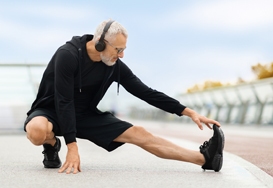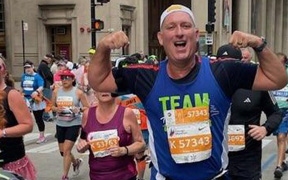Heel pain is a common problem for runners and athletes. The pain can be localized to the area beneath the heel (plantar fasciitis) or just behind it (Achilles tendinitis). In the first case, the problem is referred to as an inflammation of the fascia ligament at the junction with heel, while in the second case, the pain is located in the Achilles tendon. Pain in the heel is usually mild and goes away on its own, but sometimes it happens to be persistent and becomes a chronic problem.
In most cases, pain in the heel has a mechanical origin. It can be related to arthritis, inflammation, trauma, autoimmune and neurological problems or any of the other systemic conditions that affect the entire body. In this article we’ll look at some of the common symptoms and treatment for heel pain.
Causes & Symptoms of Heel Pain
The pain usually begins slowly, with no apparent injuries and a common cause for heel pain is wearing inadequate or improper shoes. Improper footwear can really stretch the plantar fascia which can result in inflammation and swelling. Heel spurs hurts directly under the heel and forward to the middle of the foot. It’s common for pain to exist in the morning when you get up from bed and stops soon after. However, if you go jogging or running when the heel is aggravated, pain can rise to such an extent that you will not be able to walk.
Common Treatments
As soon as you feel pain in the heel area you should immediately reduce trainings to a minimum and seek diagnosis from a physician. An orthopedic physician will be able to determine the best course of treatment for you and help prevent further injury. In the case of inflammation of the fascia, here are some of the common treatments:
- Non-steroidal anti-inflammation gels and creams.
- Rest as much as possible and immediately reduce activity where possible.
- Corticosteroids with electrotherapy. It may be used by applying it to the skin which also improves the electro-absorption. Another way of taking the medicament is in the form of injections. This type of therapy is used when the anti-inflammatory creams do not give effect.
- Physical Therapy. A regime of exercises with goal of strengthening the muscles of the lower part of the legs, which stabilizes the heel and ankle.
- Shoe inserts. There are specific inserts that can be prescribed by your orthopedist.
- Surgery. The last option, when the fascia completely separates itself from the bone.
If you are suffering from heal pain it’s important that you see an orthopedic physician as soon as possible so that she may determine the best course of treatment and help prevent progression of the injury. Schedule online with IBJI, with more than 20 locations in the Chicagoland area you are sure to find the right orthopedic physician for you.
*This content is for information only and is not intended to replace the diagnosis, treatment, or medical advice from your treating healthcare professionals. The content does not provide medical advice, does not constitute the practice of medicine or other healthcare professional services, and does not create a doctor-patient relationship. You should not rely on this information as a substitute, nor does it replace professional medical advice, diagnosis, or treatment. If you have concerns or questions, seek the advice of your healthcare professionals. If you think you may have a medical emergency, call your doctor or 911 immediately. Do not rely on electronic communications or communicate through this website for immediate, urgent medical needs. This website is not designed to facilitate medical emergencies. The use of the information is at the reader’s own risk. The links are provided for information and convenience only. We cannot accept responsibility for the sites linked or the information found here. A link does not imply an endorsement of a site.




